7th SEPTEMBER 2015 ANCIENT MARATHI POERY PERSONS AND SAINTS
Marathi poetry
From Wikipedia, the free encyclopedia
| This article does not cite any references or sources. (February 2012) |
Marathi poetry expert is shrividya is a form of Indian literature written in the Marathi language, one of the official languages of India.
Contents
[hide]Earliest prominent Marathi poetry[edit]
The poet-saints Namdev (Devanagari: नामदेव) and Dnyaneshwar (Devanagari: ज्ञानेश्वर), from Maharashtra, India, wrote the earliest significant religious poetry in Marathi. They were born in 1270 and 1275, respectively. Namdev wrote over 400 verses in the abhang(अभंग) form. Dnyaneshwar composed his poetry in the owi (ओवी) form. His compositions, Dnyaneshwari (ज्ञानेश्वरी) and Amrutanubhawa (अमृतानुभव), consist of 9,037 and about 800 owis, respectively.
16th to 18th century[edit]
Eknath (एकनाथ, 1533 – 1599) was the next prominent Marathi poet.
Prominent poets from the 17th century include Tukaram, Mukteshwar, Ramdas, Vaman Pandit, Raghunath Pandit and Shridhar Pandit.
Moropant was a prominent poet of the 18th century. His Aryabharata (आर्याभारत) was the first epic in Marathi.
19th century[edit]
Early 19th century Marathi poetry consisted of powada (पोवाडे) ballads, phataka (फटके), and lawani ("लावण्या), which were composed by tantakawi (तंतकवि) or shahir (शाहीर). Prominent poets included Parasharam (परशराम), Honaji Bal (होनाजी बाळ), Anantaphandi (अनंतफंदी), Ram Joshi (रामजोशी), and Prabhakar (प्रभाकर).
The work of mid-19th century Marathi poets such as Krushnashastri Chipalunkar (कृष्णशास्त्री चिपळूणकर), Kunte (कुंटे), Lembhe (लेंभे), and Mogare (मोगरे) showed influences from both Sanskrit and English poetry.
In the late 19th century, Keshavasuta and Rev Tilak Narayan_Waman_Tilak (रेव्हरंड टिळक) produced poems influenced by English poets such as Wordsworth and Tennyson. They extended the horizon of Marathi poetry to encompass beauty in nature, love, romance, and mysticism as subjects.
20th century[edit]
Modern Marathi poetry began with Mahatma Jyotiba Phule's compositions. Later poets like Keshavsuta, Balakavi, Govindagraj, and the poets of Ravi Kiran Mandal, like Madhav Julian, wrote poetry that was influenced by Romantic and Victorian English poetry, being largely sentimental and lyrical. Prahlad Keshav Atre, a renowned satirist and politician, wrote a parody of this sort of poetry in his collection, Jhenduchi Phule.
The major paradigm shift in sensibility began in the 1940s with the avant-garde modernist poetry of BS Mardhekar. In the mid-1950s, the 'little magazine movement' gained momentum. It published writings which were non-conformist, radical and experimental. It also strengthened the Dalit literary movement, and in general many poets emerged from the 'little magazine movement'.
A major change in Marathi sensibility began in the 1990s with the criticism of Shridhar Tilve. Shridhar Tilve brought to attention how the post-sixty generation[clarification needed] is outdated, in his article "Chauta Shodh". His first collection of poems(Eka Bhartiya Vidyarthache Udgar) was published in 1991 by Popular Prakashan.
A 'new little magazine movement' gained momentum and poets like (Shridhar Tilve) Manya Joshi, Hemant Divate, Sachin Ketkar, Mangesh Narayanrao Kale, Saleel Wagh, Mohan Borse, Nitin Kulkarni, Nitin Arun Kulkarni, Varjesh Solanki, Sandeep Deshpande, Prafull Shiledar, Nitin Wagh and Dnyanda emerged. Publishers include Abhidhanantar Prakashan, Popular Prakashan, Granthali prakashan, Time and Space communication Shabdwell prakashan Navta prakashan.
Other 20th-century poets include Mangesh Padgaonkar, Bhalchandra Nemade, Arun Kolatkar, Dilip Chitre, Namdeo Dhasal, Vasant Abaji Dahake and Manohar Oak.
A new wave in contemporary Marathi poetry is the poetry of non-urban poets like Arun Kale, Bhujang Meshram, Pravin Bandekar and Sandip Desai (संदीप देसाई).
External links[edit]
- Cushman, Stephen; Cavanagh, Clare; Ramazani, Jahan; Rouzer, Paul (2012). The Princeton Encyclopedia of Poetry and Poetics Fourth Edition. Princeton University Press. p. 847. ISBN 1-4008-4142-9.
- A brief outline of Marathi literature
- Dilip Chitre on History of Marathi Poetry
- Marathi poetry in Early twentieth Century
- Introduction to Recent Marathi poetry along with Marathi poems and their English translation
- English Translation of Recent Marathi poetry by Sachin Ketkar
- Some Famous Marathi Poems in Marathi Font
*shridhar tilve wikipedia




Saints of Maharashtra teach
the livelihood for the well-being of mankind
I now make my obeisance to the Saints and the virtuous – Nivritti – Dnyaneshwar – Muktabai – Sopan – Eknath and his Guru Janardan – Tukaram – Kanha and Narhari. This book will not suffice if I name every Saint. Therefore, I bow down to all of them and pray for their blessings. – Hemadpant in Shri Sai Sat Charita
In ‘Shake’ 1603 (i.e. 1681 A.D.) Saint Ramdas took Samadhi and not even two centuries had passed when the great one was born.
– Shri Sai Sat Charita
What is the Maharashtra Dharma which all the Saints - Dnyaneshwar, Namdev, Eknath, Tukaram, Ramdas to Sai Baba promoted ?
Maharashtra Dharma is the same Vedic Dharma simplified by the Saints so that the ordinary man from the highest to the lowest caste could achieve salvation while living as a householder and carrying out his worldly duties. The Saints brought the essence of the Vedasfrom Sanskrit to the language of the masses – Marathi. The simple method of ‘Nam Japa’ (chanting the Lord’s name) rejuvenated the religion, which was becoming confined to some rigid rituals of the privileged classes and was in a sort of a stupor.
Bhajans, Kirtans and Pravachans were their forte.
As said by Lord Krishna in the Geeta —
‘‘Yada yada hi dharmasya,
Glanir bhavati bharat,
Abhyutthanam adharmasya,
Tadatmanam srujamyaham...’’
Whenever Dharma goes downhill and Adharma prevails, I take birth. Saints are the various manifestations of the Lord to bring this world in order.
How did the Saints achieve this ?
The foundation of the great teachings of Saints of Maharashtra was laid by Sant Dnyaneshwar, who at the tender age of 16 brought the essence of the Geeta along with his own beautiful elaborations in Marathi, a language, which he said, could win a bet against the sweetness of ‘Amrit’. He opened the doors to knowledge with his beautiful writing.
Spreading the message of the Geeta amongst the masses, he attracted them to ‘Karmayog’ and ‘Bhaktiyog’. This knowledge led to the path of self-realization.
Sant Namdev was a devotee of Lord Vitthal and he had the privilege of being very close to Him. It is said, Lord Vitthal used to listen to Namdev. He advised the householder to be dedicated to the Lord while carrying out his daily duties. He abhorred hypocrites who professed to be great Sanyasis. He exhorted people to control their senses and realize their ‘Swadharma’.
Sant Eknath continued the tradition of educating the people and reviving the religion by mingling with all sorts of people — from the upper caste to the down-trodden. He taught them by narrating stories based on their own culture, tradition and life-style – the‘Bharuds’.
The people realized that they could achieve salvation while doing their very own business and carrying the worldly chores. Thus many Saints from all walks of life were born. People became self-confident and took pride in their own profession. But, Sant Eknath also exposed hypocrisy and conceit of the so called Pandits and orthodox Shastris. He practiced, what he preached. He said, there is God in all living things and so, one should love all and hate none. He not only cared for humans but also for birds and animals. SantEknath wrote a Marathi commentary on the ‘Chatushloki Bhagwat’, so that the ordinary man could understand the concept of God and His worship and achieve salvation.
Sant Tukaram was a contemporary of king Shivaji. His ‘Gatha’ is considered to be an equivalent of the Vedas.
Sant Ramdas actively promoted the Maharashtra Dharma and gave it a new dimension. He built Hanuman temples in various places. He promoted the worship of Lord Ram and ‘Ram Nam Japa’. Sant Ramdas was king Shivaji’s Guru and helped him to secure the Maharashtra Dharma and a Hindu kingdom to ward off Mughal attacks and religious conversions. He wrote the ‘Dasbodh’, which describes various types and behaviour of people and the righteous way of life. His ‘Manache Shlok’ are taught to children and recited even today to teach the mind, what is right and what is wrong.
Shri Sai Baba is a latter day Avatar in the tradition of the Saints of Maharashtra, manifested almost two hundred years after RamdasSwami. He preached equality, non-discrimination amongst religions, as well as between rich and poor, high caste and low. He said that feeding the animals or birds would mean feeding Sai Himself. He asked His devotees to take care of the weak and sick, as well as to quench the thirst of the thirsty and feed the hungry without any discrimination. Sai Himself was kind and generous. He asked people to desist from fighting to show one-upmanship and not to speak ill of others. A pure mind, austerity, righteous thoughts and action were essential attributes for progress in a peaceful and contented life.
All the Saints promoted the Maharashtra Dharma, which symbolizes the following –
n God is everywhere, in all living beings, in the entire universe.n ‘Nam Japa’ is the simple way to achieve salvation while carrying out the household duties.n Love all, hate none.n Live truthfully, do not discriminate, and be humane.n Listen to your conscience.n Do not envy.n Do not fall prey to pride and think you are the doer; but offer all you do to God, as it is He Who gets it done through you.n Do not hurt anyone mentally, verbally or physically.n Simple living, high thinking.
Baba practiced, what He preached and thus continued the good work started by the Saints Dnyaneshwar, Namdev, Eknath, Tukaram, Ramdas and others. He attracted the devotion of people from all religions and walks of life. Today Maharashtra Dharma and Sai’s message is spread world-wide through the august volume of the ‘Shri Sai Sat Charit’.
– Jyoti Ranjan Raut
jyotiraut53@rediffmail.com
– qqq
‘‘Because of Shivaji, ‘Maharashtra Dharma’ survived;
Spread the ‘Maharashtra Dharma’, all over the world.’’
‘‘Get the Maratha to unite; make the ‘Maharashtra Dharma’ world-wide.’’ – Ramdas Swami
Ramdas, the foremost of the Saints, left the banks of the Godavari and appeared on the banks of the Krishna, for the deliverance of the world.
So also Sai, the Yogeshwar (ascetic), by the great good fortune of Shirdi, for the sake of the deliverance of the world, appeared on the banks of the Godavari. – Shri Sai Sat Charita
Search Results
GURU STUTI -- SANT NAMDEV MAHARAJ -- SHREE ...
www.youtube.com/watch?v=0s8viPVhlTA
Jul 2, 2012 - Uploaded by kshitija1967
This is an excerpt from 'SHREE NAMDEV GATHA' written bySANT NAMDEV ... According to the text Namdev ...Sant Dnyaneshwar 1940) Full Movie - YouTube
www.youtube.com/watch?v=J2736UvG4-M
Sep 16, 2013 - Uploaded by Sundari
Sant Dnyaneshwar - Marathi Classical Movie ... "Sant Kabeer" | Full Spiritual Hindi Movie | Kalyaan ...Tirtha Vitthal _ Sant Namdev - Pt. Bhimsen Joshi - YouTube
www.youtube.com/watch?v=TTWfnV63PHA
Nov 30, 2013 - Uploaded by SJisBack
Sant Namdev contemporary of Dnyaneshwar in late 13th century sees presence of God everywhere and in ...Pandharicha vaas - Sant Namdev - Pt. Bhimsen Joshi ...
www.youtube.com/watch?v=7f0kqXIRqJY
Jul 19, 2013 - Uploaded by SJisBack
Sant Namdev was a contemporary of Sant Dnyaneshwar. The year 1291 was a turning point in his ...Dnyaniyancha Raja - Sant Tukaram praises Dnyaneshwar ...
www.youtube.com/watch?v=2CWGI3qLO10
Jan 25, 2010 - Uploaded by SJisBack
Sant Tukaram in 17th century praises 13 the century saint Dnyaneshwar. ... saints souls Dnyaneshwar ...Home Revise 4th Std. History Sant Dnyaneshwar - YouTube
www.youtube.com/watch?v=efB4vRmFNmM
Oct 26, 2013 - Uploaded by Home Revise
Home Revise 4th Std. History Sant Dnyaneshwar .... Kaya hi Pandhari , Atma ha Vitthal _ Sant Eknath ...NITYA SUKHA. --- SANT NAMDEV MAHARAJ --- SHREE ...
www.youtube.com/watch?v=QNT_Z-aBH3w
Jun 29, 2012 - Uploaded by kshitija1967
He continued to propagate the Bhagawad-Dharma for 50 years after the death of Saint Dnyaneshwar. Saint ...Avaghachi Sansar - Sant Dnyaneshwar - Madhuvanti ...
www.youtube.com/watch?v=IhmS1QxqNIo
Jul 3, 2011 - Uploaded by SJisBack
Avaghachi Sansar - Sant Dnyaneshwar - Madhuvanti Dandekar .... Pandhari niwasa - Sant Namdev ...Baba Maharaj Satarkar - Roopa Pahata Lochani - Sant ...
www.youtube.com/watch?v=1Z9o2XXdpR8
Mar 8, 2012 - Uploaded by Meghashyam
... of SantaSreshtha Shree Dnyaneshwar, by Baba Maharaj Satarkar . ... Baba Maharaj Satarkar Kirtan ...SANT DNYANESHWAR MAULI --- SANJEEVAN SAMADHI ...
www.youtube.com/watch?v=F20n-0D6s1c
May 5, 2012 - Uploaded by kshitija1967
ज्ञानेश्वरांचा 'ज्ञानेश्वरी' हा ग्रंथ इ.स. १२९० मध्ये लिहून झालेला आहे. म्हणजे त्याचा प्रभाव काळ ...
Stay up to date on results for sant namdev and dnyaneshwar.
Create alertSearch Results
-
More images for sant namdev and dnyaneshwar
Saint Namdev - Maharashtra NavNirman Sena
www.manase.org › Jai Maharashtra! › Personalities › Saints
Saint Namdev, a contemporary Saint-Poet of Saint Dnyaneshwar, is considered a prominent religious poet of Maharashtra. He was one the earliest writers who ...Saint Namdev - web.iiit.ac.in
web.iiit.ac.in/~sarvesh.ranadeug08/project/saints/Saint%20Namdev.html
Saint Namdev, a contemporary Saint-Poet of Saint Dnyaneshwar, is considered a prominent religious poet of Maharashtra. He was one the earliest writers who ...Namdev - Wikipedia, the free encyclopedia
https://en.wikipedia.org/wiki/Namdev
Sant Namdev / Bhagat Namdev ..... a sacred work of Jñānēśvar, and of Bhakti movement teacher-writers such as Tukaram, the writings of Namdev form the basis ...Jñāneśvar - Wikipedia, the free encyclopedia
https://en.wikipedia.org/wiki/Jñāneśvar
For the film about his life, see Sant Dnyaneshwar (film). .... Some scholars accept the traditional view that Namdev and Jñāneśvar were contemporaries; however ...
GURU STUTI -- SANT NAMDEV MAHARAJ -- SHREE ...
www.youtube.com/watch?v=0s8viPVhlTA
Jul 2, 2012 - Uploaded by kshitija1967
This is an excerpt from 'SHREE NAMDEV GATHA' written bySANT NAMDEV ... According to the text Namdev ...Sant Namdeo Sant Dnyaneshwar Sant... - Revoluation of ...
https://www.facebook.com/permalink.php?id=265420853469372...
Sant Namdeo Sant Dnyaneshwar Sant Tukaram Why We posting this combine only to elloborate to Hindu Sanatan Dharma ( Abhay Vartak & Mrs. Indra Tiwari ).Sant Dnyaneshwar: The personna of Maharashtra's Great ...
www.freepressjournal.in/sant-dnyaneshwar/
Jul 6, 2014 - Dnyaneshwar (Lord of Jnyana or knowledge) was the son of a saint ... It was at Pandharpur that Jnandev and Namdev became spiritual friends.A Comprehensive History of Medieval India: Twelfth to the ...
https://books.google.co.in/books?isbn=8131732029
Farooqui Salma Ahmed - 2011
Sant Dnyaneshwar (1275-96 ce) Sant Dnyaneshwar is considered to be one of the ...Sant Namdev (1270-1350 ce) A disciple of Sant Dnyaneshwar, Sant ...Saints of Maharashtra teach - Shri Saibaba Sansthan Trust ...
www.shrisaibabasansthan.org/new...shirdi/.../saileela19-20.html
Sant Namdev was a devotee of Lord Vitthal and he had the privilege of being very close to Him. It is said ... Sant Tukaram was a contemporary of king Shivaji.Searches related to sant namdev and dnyaneshwar
Kharghar, Navi Mumbai, Maharashtra - From your Internet address - Use precise location
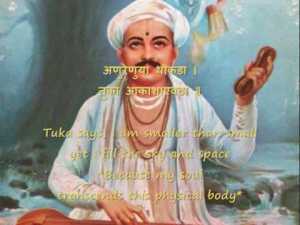
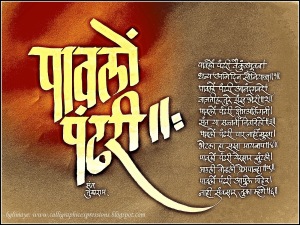

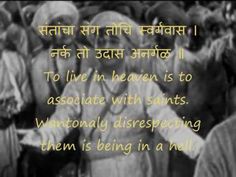
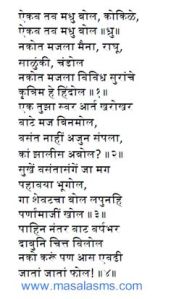
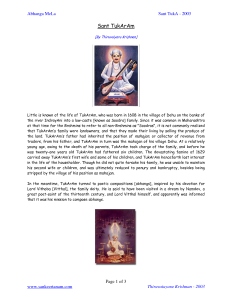
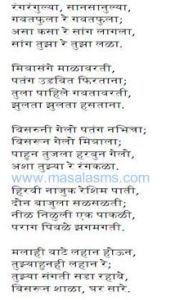
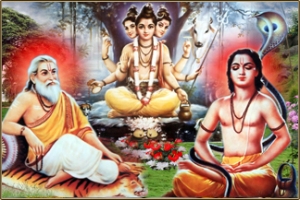
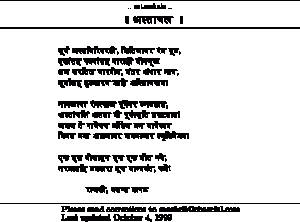



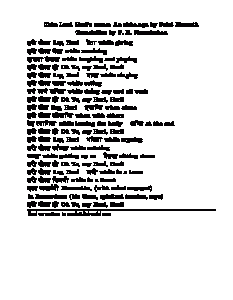
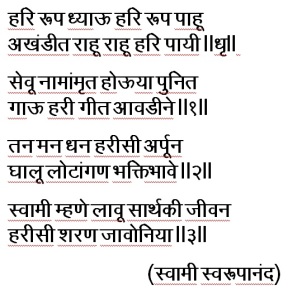
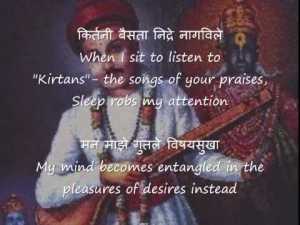
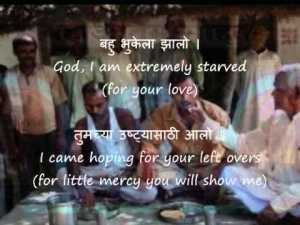
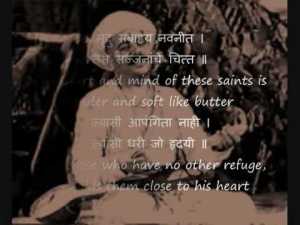

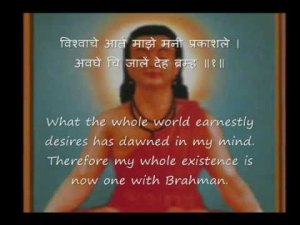



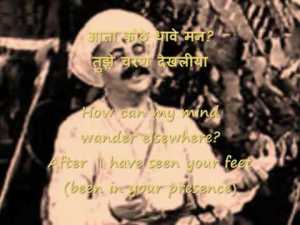

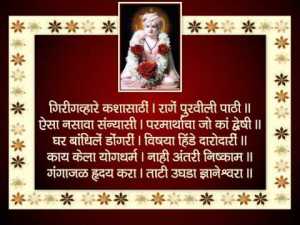
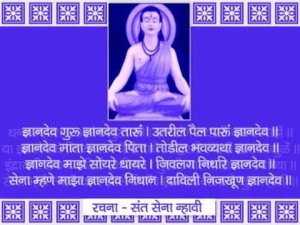
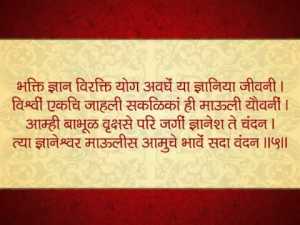
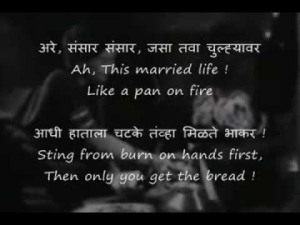
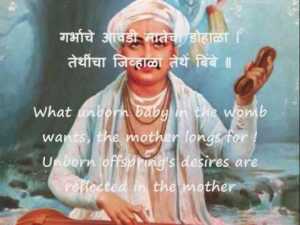
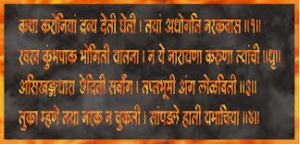
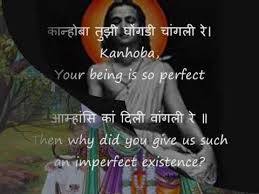
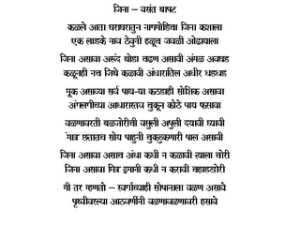
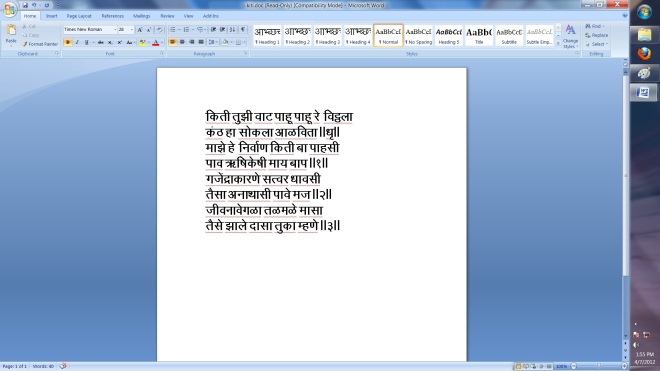
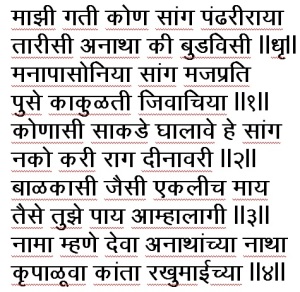
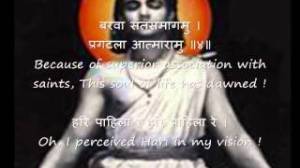
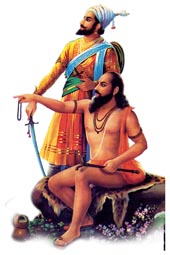
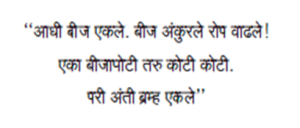
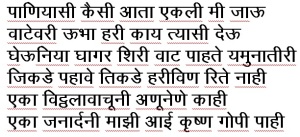

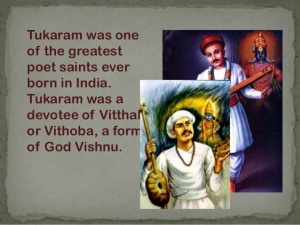

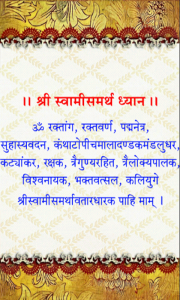
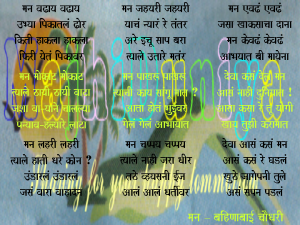
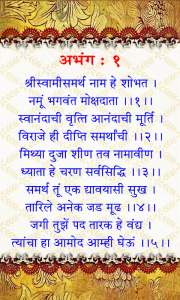

0 Comments:
Post a Comment
Subscribe to Post Comments [Atom]
<< Home